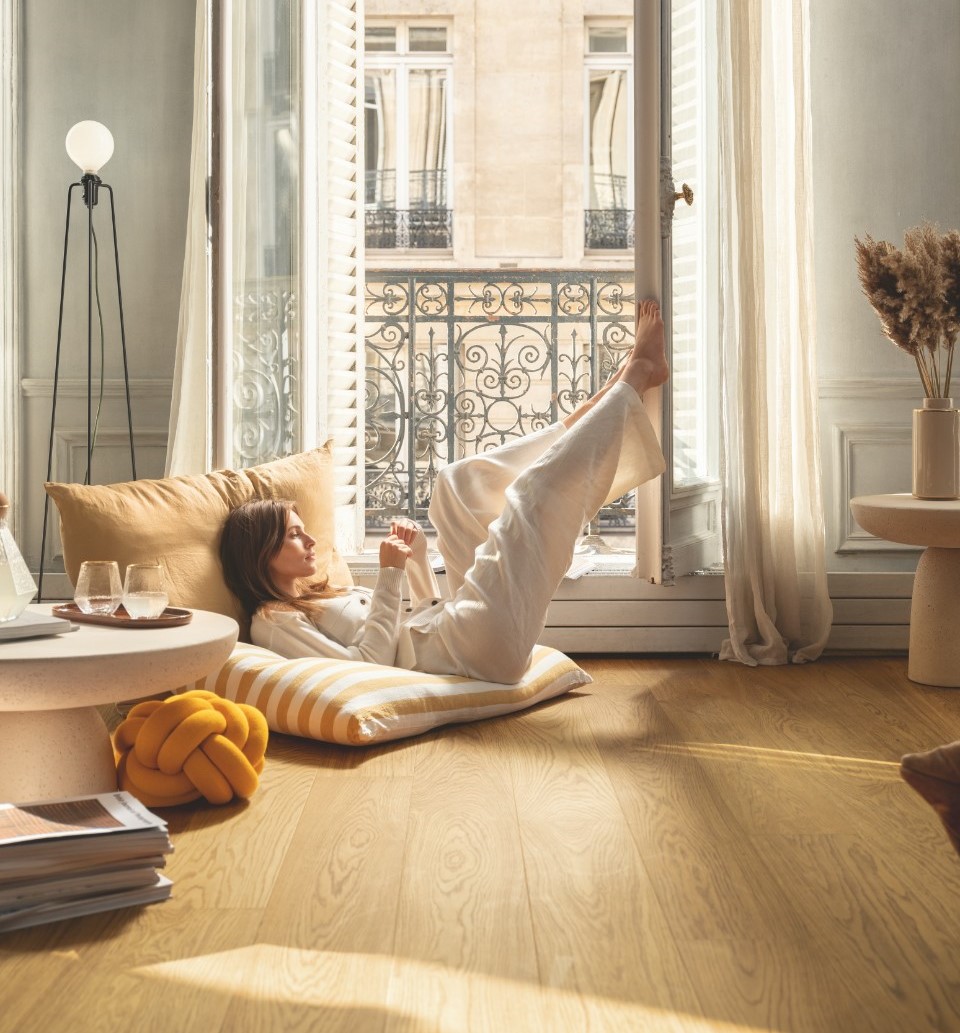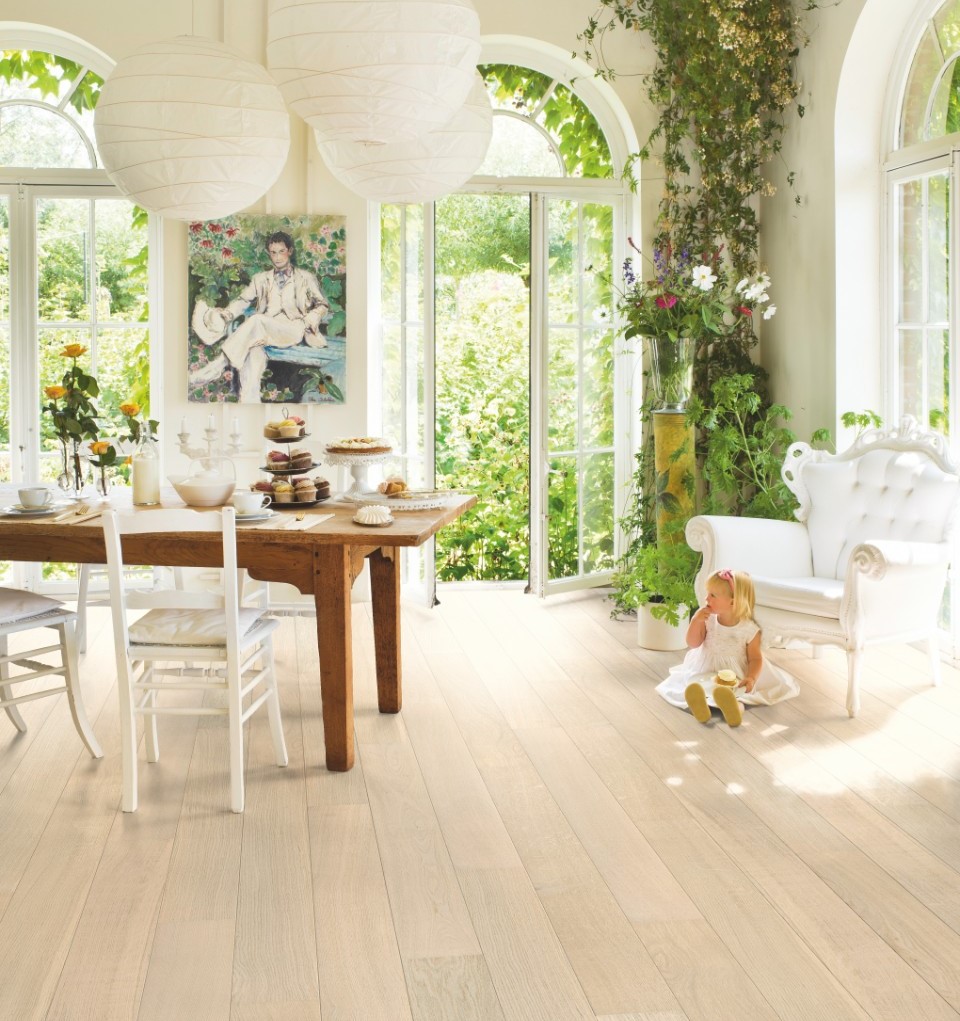Engineered wood and its positive features.
Stability and durability: the multilayer construction of engineered wood flooring provides greater stability than solid wood flooring, especially in changing humidity conditions.
This means that the dimensions of a parquet floor will shrink or increase less as humidity changes.
Installation versatility: engineered wood flooring can be successfully installed both floating and glued to a variety of subfloors, including concrete, plywood and even existing floors, provided it is sufficiently flat and fixed to the subfloor. Engineered wood flooring is also well suited for installation on underfloor heating.
A genuine and natural material: the top layer of engineered wood flooring is made of genuine precious wood, which gives it a beautiful and natural look comparable to solid wood flooring. Each parquet tile has its own unique texture and tone, making each floor unique.
A wide range of choices: different wood species, sizes, patterns and finishes allow you to find the perfect solution for every interior.
A cost-effective solution: natural parquet is often more affordable than solid hardwood parquet, while offering an equivalent appearance.
Environmentally friendly: the use of slow-growing hardwoods is significantly reduced compared to solid wood flooring. The middle and bottom layers of engineered wood flooring consist of faster-growing coniferous wood or HDF, produced from partially recycled wood.
Easy maintenance: wooden parquets are easy to clean and do not require frequent maintenance.
Greater stability: thanks to their multi-layered construction, engineered wood flooring is significantly more resistant to warping and cracking.
Long life: although the top layer of engineered wood is thinner than solid wood floors, hardwood floors can last a lifetime if properly maintained. Depending on the thickness of the engineered wood layer, laminated hardwood flooring can be sanded several times to restore a fresh appearance. It is also possible to change the tone of the parquet with each sanding.
Quick and easy to install: engineered wood flooring is supplied with a click joint, making installation quick and easy. At the same time, it is also possible to glue the parquet to the subfloor, which adds a number of advantages to the floor – gluing the parquet to the subfloor means that no deformation strips need to be installed between the spaces and the footfall noise is also reduced.
Moisture resistance.
Remember that although engineered wood has many advantages, it is important to choose a good quality parquet flooring as well as a parquet underlay. The quality of the parquet underlay itself is equally important in achieving a technically sound finish. It is also important to carry out a good quality, proper parquet floor installation so that all the positive benefits of engineered wood flooring can be enjoyed.

Additional recommendations:
When choosing engineered wood flooring, we also recommend considering parquet with a moisture-resistant HDF middle layer, produced with innovative technology. This minimises many of the drawbacks of laminated wood flooring.
These parquets use a special construction with a durable and stable HDF middle layer. The HDF construction gives the parquet a significantly higher resistance to bruising. For example, the well-known heel marks are significantly more resistant to HDF than conventional parquet.
In addition to its improved resistance to bruising, HDF parquet also has the advantage of significantly lower footfall noise. Thanks to the HDF middle layer, the weight of the parquet is approximately 50% higher, which ensures less footfall noise when walking on it.
With HDF construction, parquets are significantly more resistant to potential moisture damage thanks to the moisture-resistant HDF middle layer and waxed tongue and groove joints, which prevent moisture from entering the tongue and groove joints or under the parquet.
HDF engineered wood flooring also does not exhibit the common scratching problem that is inherent in most floating tongue and groove flooring when the subfloor is not sufficiently level.
HDF centre-layered parquet is a very good solution for underfloor heating as the middle layer is significantly denser than the coniferous middle layer of conventional engineered wood and therefore HDF centre-layered parquet conducts heat better. The HDF middle layer also does not have the gaps between the lamellas that are typical of a conventional coniferous middle layer, which makes the heat dissipation of HDF middle layer parquet more uniform.

See the product range: Parquet – Viimistluskaubamaja